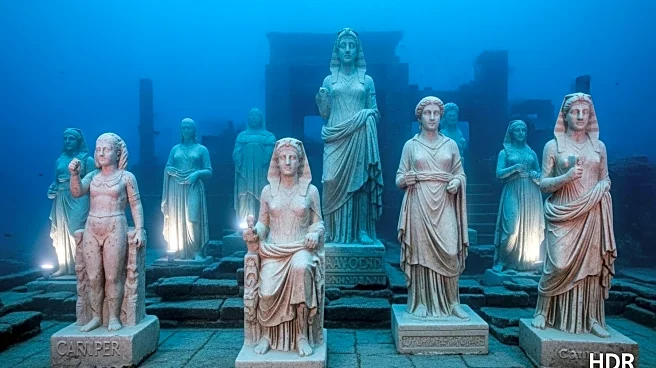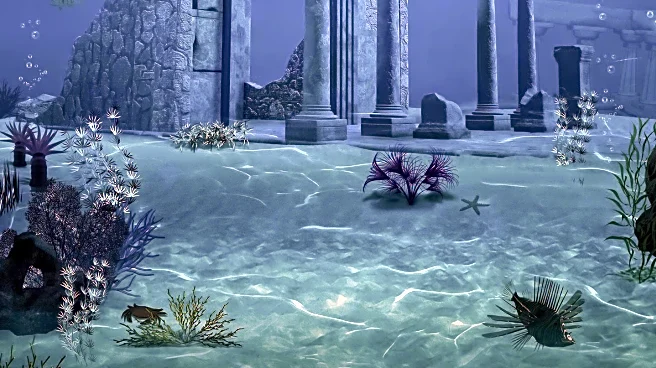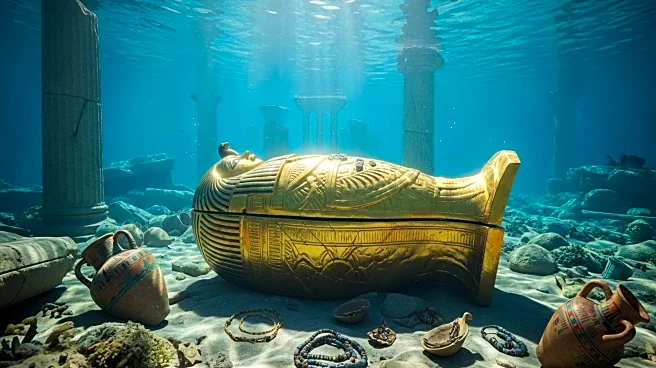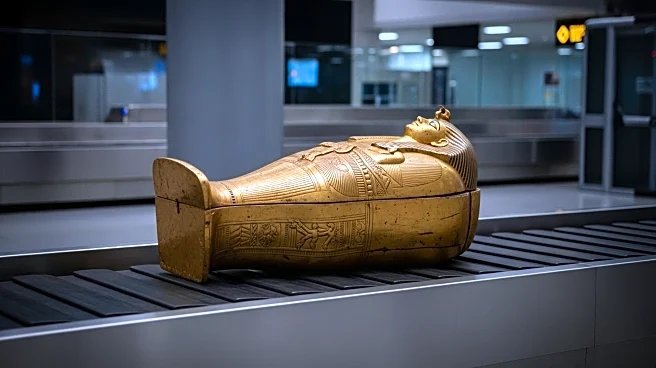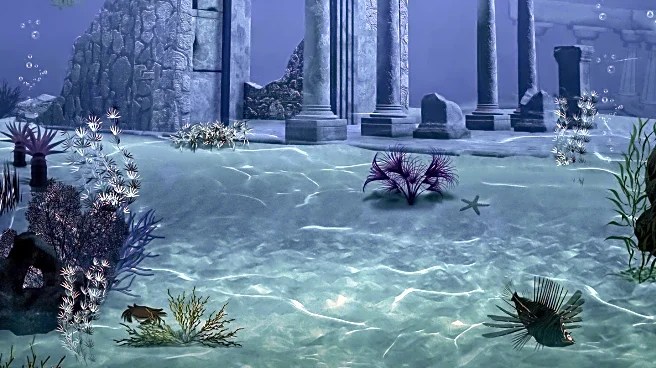What's Happening?
Egypt has uncovered the 2,000-year-old remnants of Canopus, a sunken city off the coast of Alexandria, including buildings, an ancient dock, and monumental statues. The city, once a major commercial and military hub, was lost beneath the waters due to earthquakes and rising sea levels. Recent underwater excavations have revealed limestone buildings, reservoirs, and ponds used for fish cultivation. Among the discoveries are a giant quartz sphinx, a granite statue from the late Ptolemaic era, and the lower half of a Roman nobleman carved from white marble.
Why It's Important?
The recovery of artifacts from Canopus is a significant milestone in Egypt's efforts to preserve its cultural heritage. These discoveries provide valuable insights into the city's historical significance and its role in ancient trade and commerce. The artifacts, including statues and remnants of docks, offer a glimpse into the architectural and artistic achievements of the Ptolemaic and Roman periods. The findings contribute to the understanding of ancient Egyptian civilization and its interactions with other cultures across the Mediterranean.
What's Next?
Egyptian authorities may consider creating an underwater museum to preserve and showcase the artifacts from Canopus and other sunken cities. Further excavations could uncover additional materials that provide more information about the city's history and its economic and cultural impact. The discoveries may also lead to increased interest in underwater archaeology and the exploration of other submerged sites in the region.
